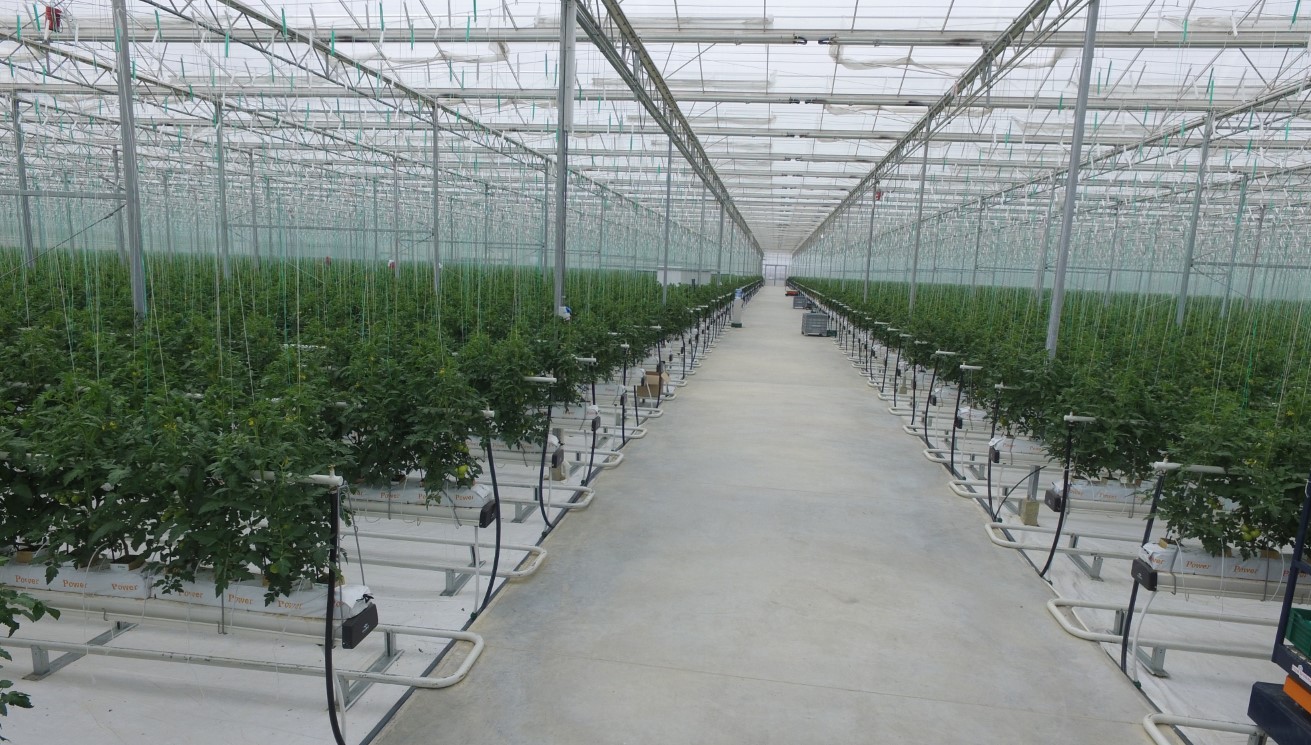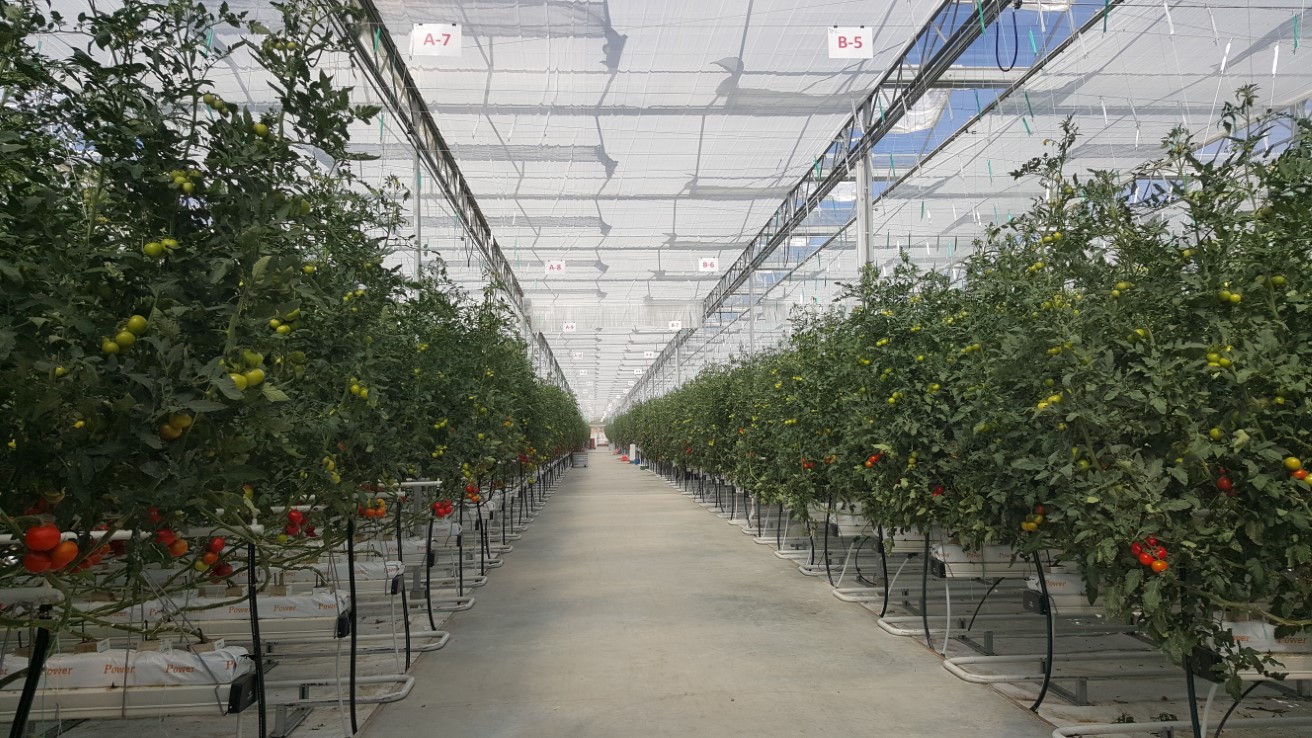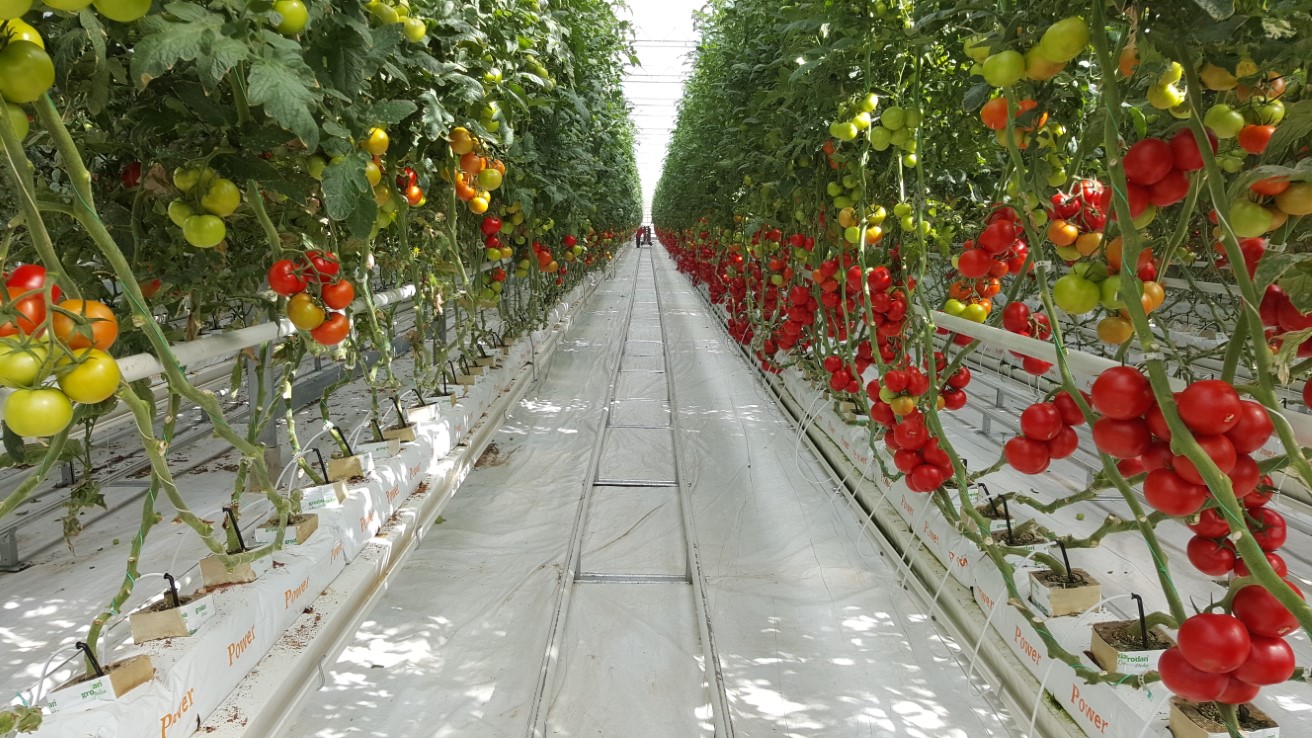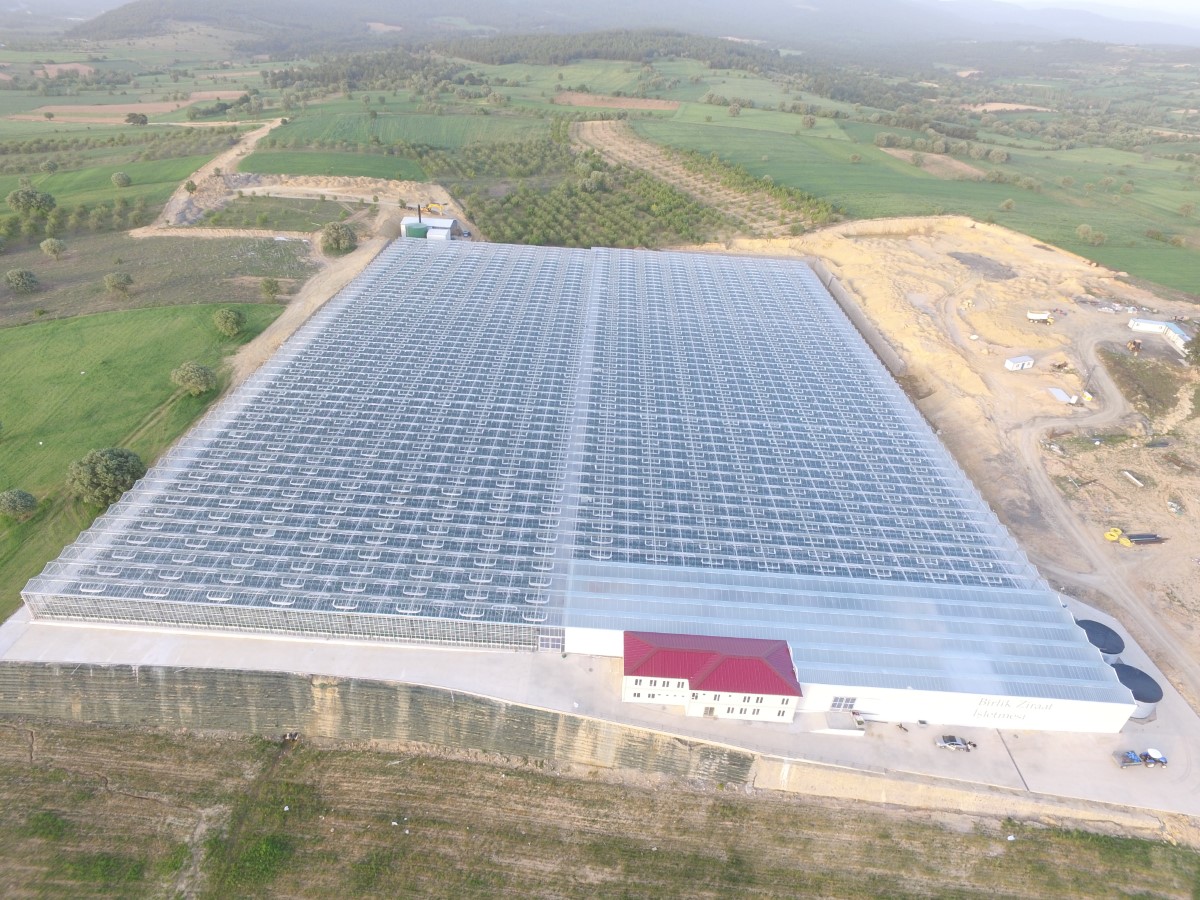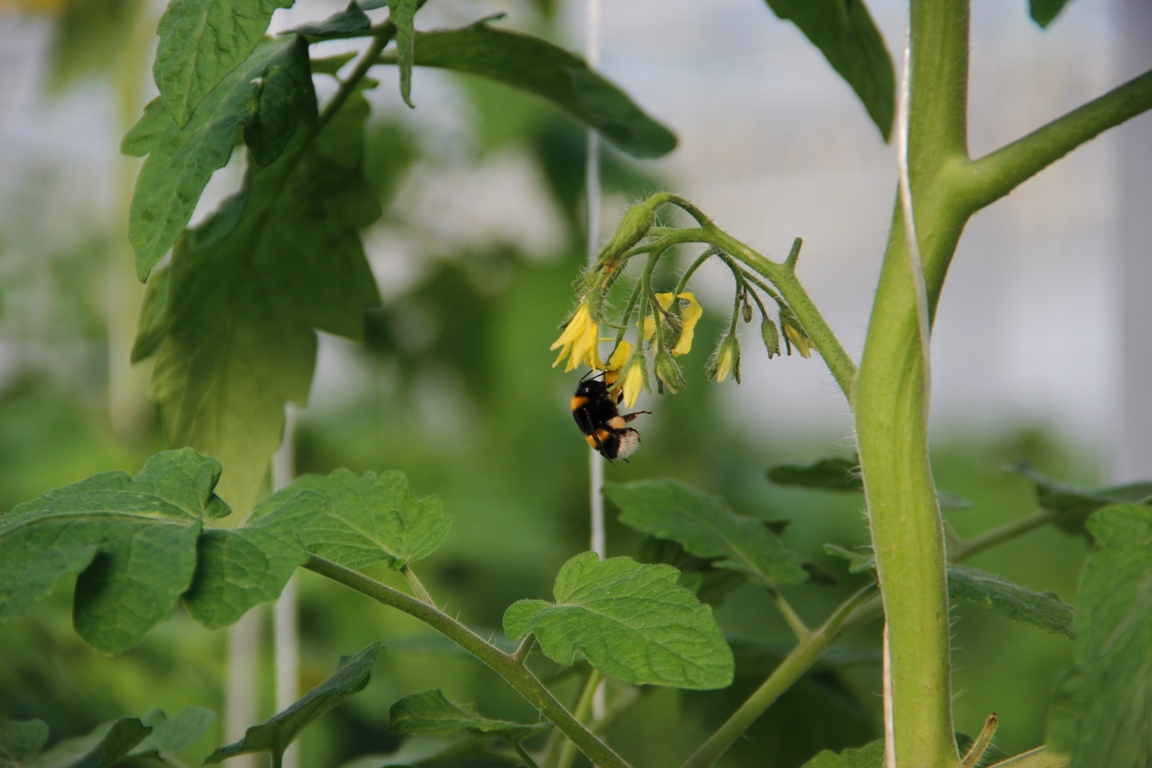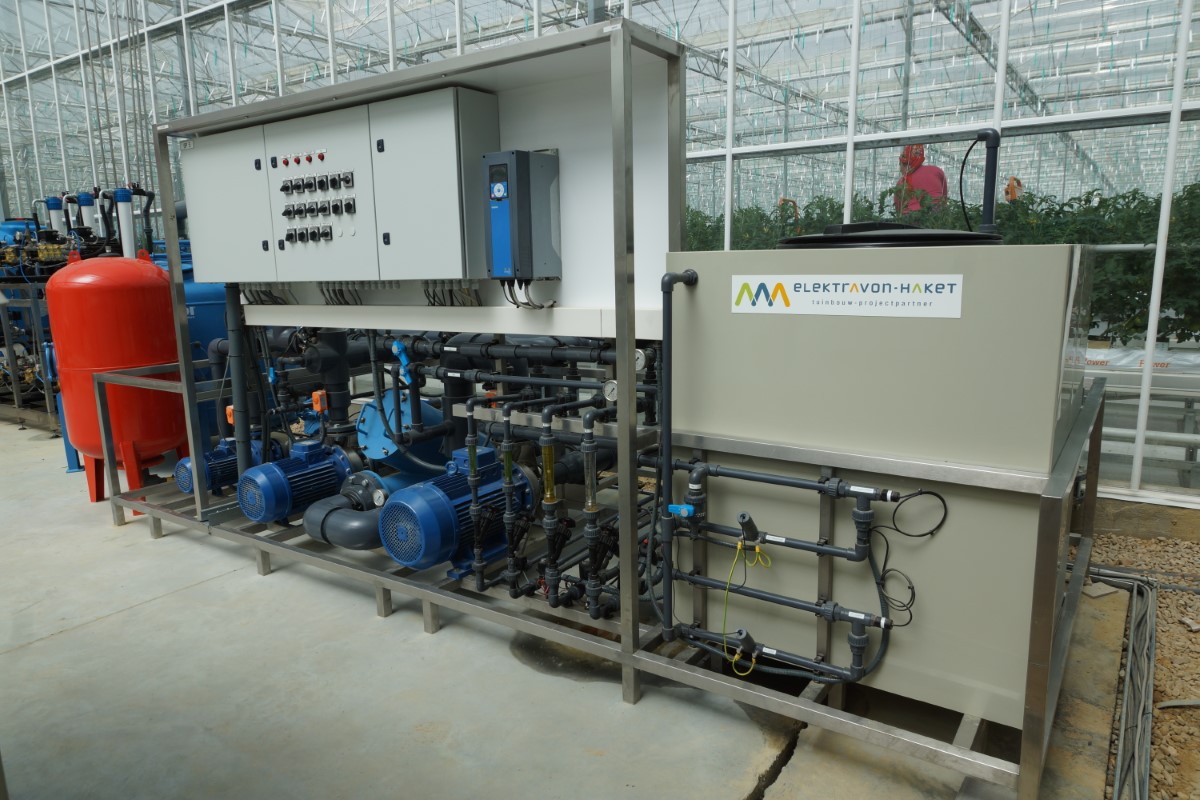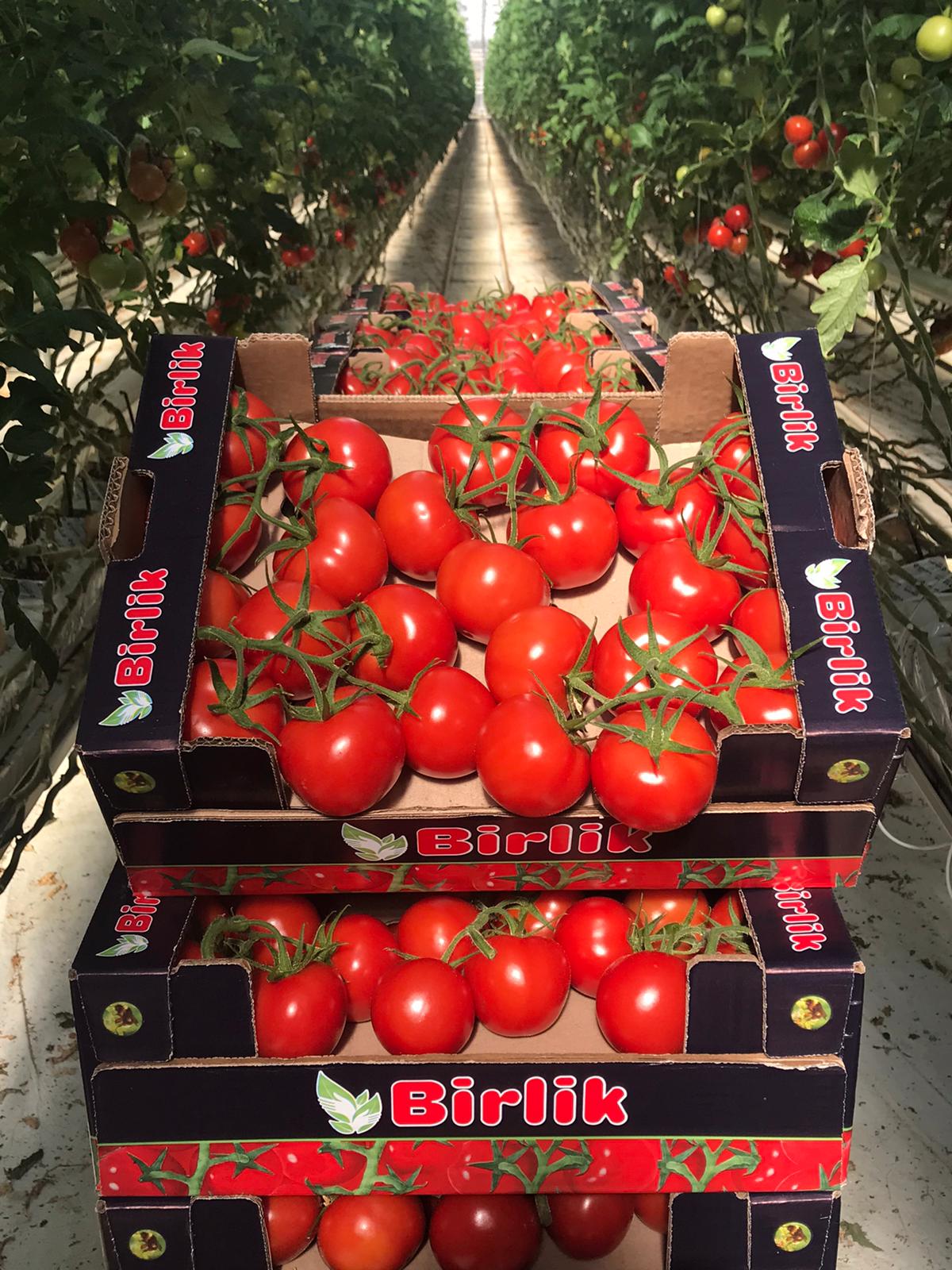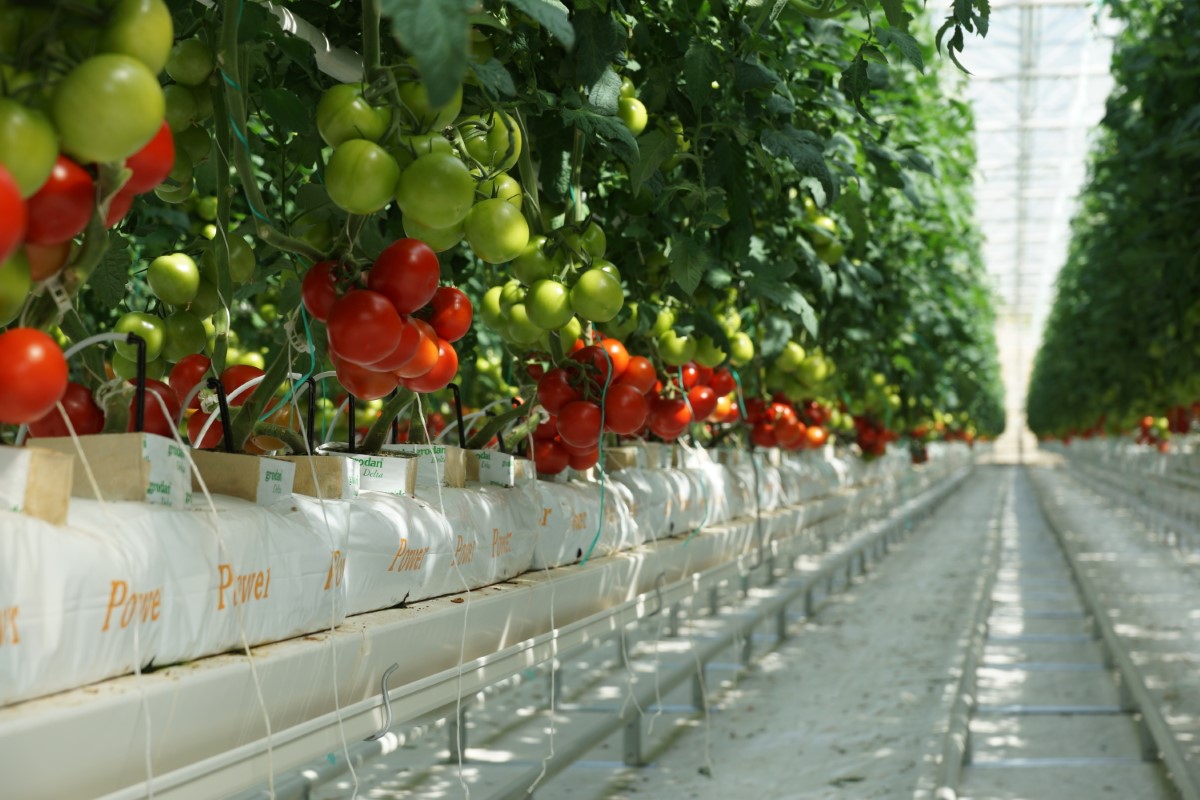In our facility, which started production in 2016, production is carried out for 12 months in a total closed area of 90,200 m² including 86,700 m² greenhouse, 3,500 m² packaging and technical areas.
Turkey / Usak located in glasshouse "Birlik Ziraat İşletmesi" which was used to install the latest Dutch technology.
Glass Greenhouse
Glass Greenhouse; An environment free from harmful effects of the environment such as wind, frost, rain, pests and diseases is the ideal production place for growing high quality and abundant products in all seasons.
In open field agriculture, factors such as high temperature, humidity, wind, frost and rain affect product quality and yield negatively. However, in a glass greenhouse, production is carried out in an environment that is far from all these negative conditions and where ideal conditions are provided. Heat and light are indispensable food for all fruits and vegetables. However, more than the light and heat needed by the plants adversely affect plant growth and productivity.
In glass greenhouses, it is easier to increase the quality and efficiency as it is ensured that sunlight and heat are used under ideal conditions by shading when necessary.
Geothermal Heating
It is necessary to produce in cold season conditions in order to obtain fresh products in all seasons. In order to ensure the development of the plant in cold weather, the greenhouse should be heated at the ideal temperature.
Hormone Free Production
There is a concern among the public that the production in all greenhouses is hormonal. In technological greenhouses, production is made in an environment that is completely suitable for the nature of the plant. Pollination of all plants in open areas; It happens through winds, bees, and insects. However, since greenhouses are closed areas, there is no possibility to ensure pollination. For this reason, for pollination in greenhouses, it is done completely naturally by means of bumblebees.
Soilless Agriculture
We all know that plants grow in soil but, what is soil? Well, it is certainly our most abundant growing medium, but it also contains the typical macro and micro-nutrients needed for plant growth. When water travels through soil, it takes those nutrients with it to the plant roots. In soilless agriculture, such as hydroponics, we simply deliver these same nutrients that have been pre-mixed into a water reservoir, along with high levels of oxygen, efficiently to the plant roots.
Soilless agriculture is done in cultivation environments such as Coconut Shells (Cocopeat), which is a 100% organic environment, and inorganic Rock Wool (Rockwool) and Perlite. Coconut shell contains long fibers and powdery grains. Cocopeat sheets are obtained by drying these fibers and grains, mixing them in certain proportions and compacting them. Cocopeat provides a better aeration of plant roots from the soil. Cocopeat is also the right choice as a nutrient. It contains nitrogen, phosphorus, potassium and micro nutrients. It also has natural rooting hormones and anti-fungal properties.
The technology used provides the opportunity to irrigate and fertilize each plant with the drip system at the most ideal hours of the day. Irrigation water is used by resting it first and then purifying it from all kinds of particles with osmosis system and Ultraviolet.
Automation
In our greenhouses, systems such as water treatment, irrigation, fertilization, fogging (humidification), natural ventilation, heating, shading are automatically operated and controlled according to the information sent to the computer from the sensors in the greenhouse.

